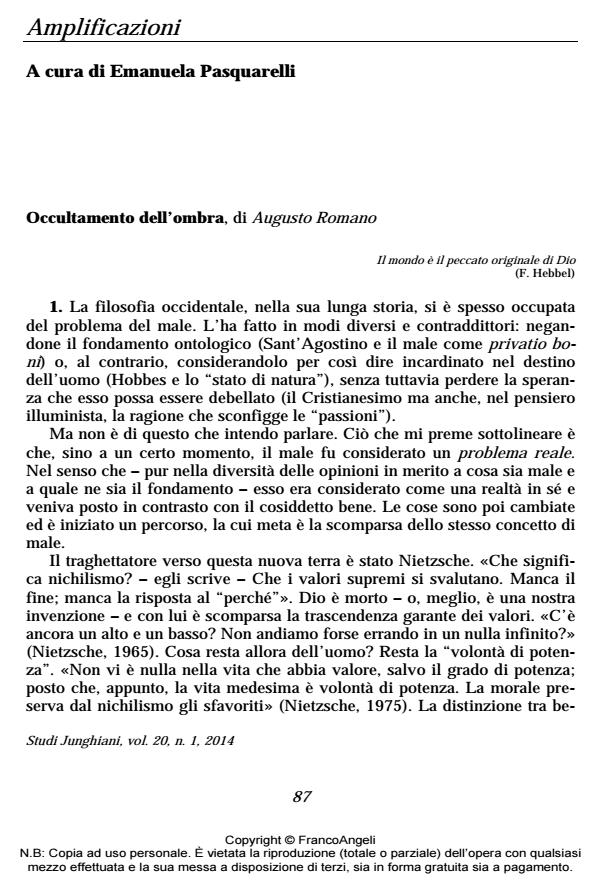Concealment of the Shadow
Journal title STUDI JUNGHIANI
Author/s Emanuela Pasquarelli
Publishing Year 2014 Issue 2014/39
Language Italian Pages 11 P. 87-97 File size 46 KB
DOI 10.3280/JUN2014-039007
DOI is like a bar code for intellectual property: to have more infomation
click here
Below, you can see the article first page
If you want to buy this article in PDF format, you can do it, following the instructions to buy download credits

FrancoAngeli is member of Publishers International Linking Association, Inc (PILA), a not-for-profit association which run the CrossRef service enabling links to and from online scholarly content.
The aim of the present work is to show how, in the era of post-modernity, we are witnessing the concealment of the Shadow, to be understood as the dissolution of the tension between opposites. This disintegration makes difficult the same thinkability of the Shadow, and therefore our possibility to became aware of it. The text traces in outline the history of this transformation, questioning the thought of nihilism, the psychology of narcissism, the development of the techniques of mass communication, the expansion of the so-called "virtual reality": all factors that have fueled the spirit of post-modernity.
Keywords: Shadow, nihilism, narcissism, post-modernity, image
Emanuela Pasquarelli, Occultamento dell’ombra in "STUDI JUNGHIANI" 39/2014, pp 87-97, DOI: 10.3280/JUN2014-039007